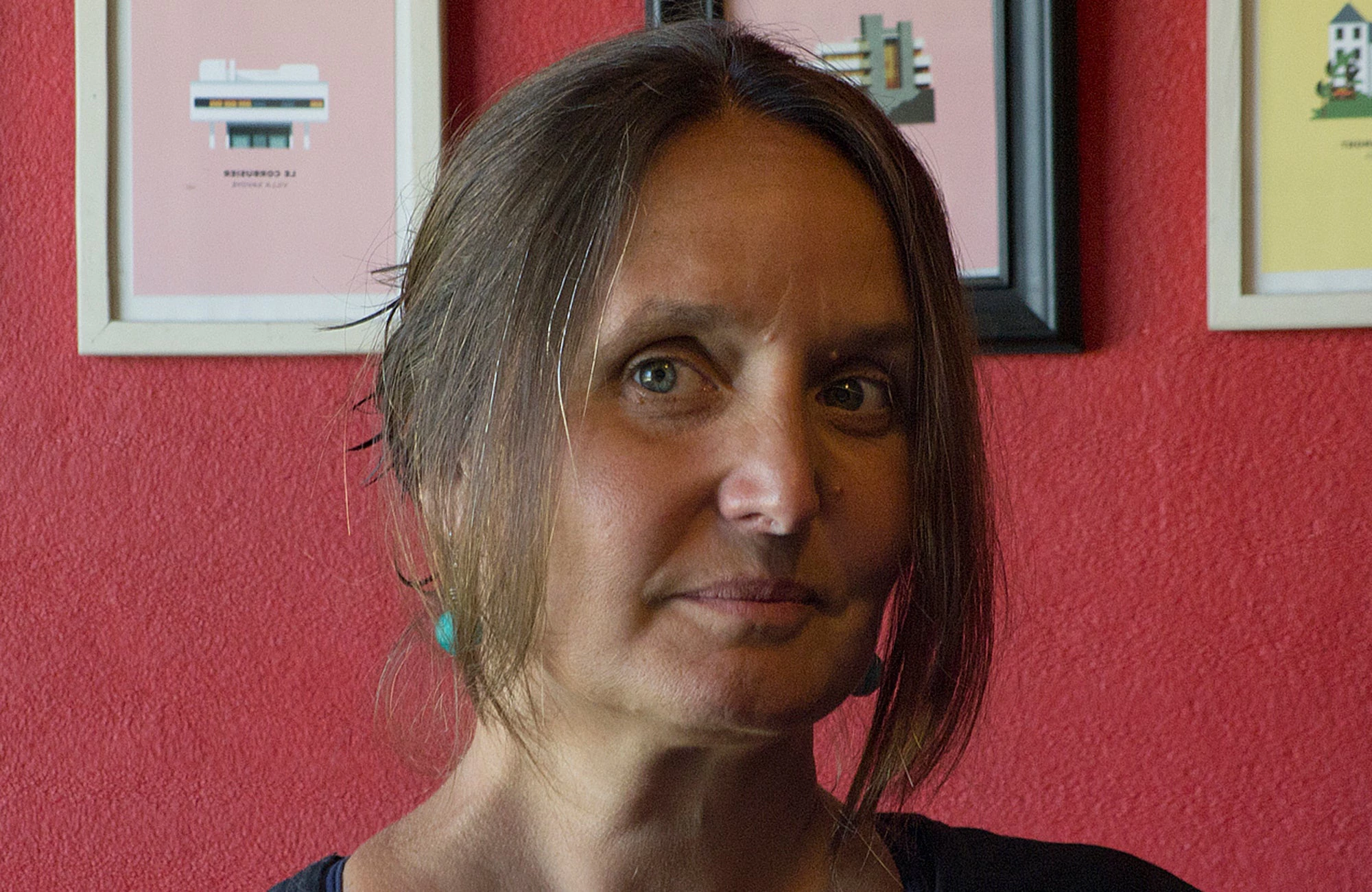 Clase de robótica en Montevideo. Valeria Bolla/World Bank
Clase de robótica en Montevideo. Valeria Bolla/World Bank
Jorgelina, a girl from a primary public school in one of the less developed areas outside Montevideo, stares at her laptop screen. She is not distracted by social networks or pop music videos. Nothing can divert her attention from the little mouse that runs through a complex labyrinth to catch a piece of cheese. The mouse, the labyrinth and the cheese are part of the videogame that jointly with six other 11 years old girls from her class she has built from scratch.
As there are not enough specialized primary teachers in Uruguay to guide children through the labyrinths of learning to code, Jorgelina and her classmates are being taught by a remote teacher from a neighboring country, Argentina. The kids are also assisted by their main teacher, within the Computational Thinking project, led by Plan Ceibal and implemented in all Uruguayan Full-Time Schools, a model supported by the World Bank.
Hopefully, one day these six girls will contribute to increase the proportion of women in science, technology, engineering and mathematic in their country and across the region.
Teaching computational thinking to help children solve complex problems in a creative and cooperative way or using software and hardware solutions to facilitate productive meetings between students in a classroom with teachers who are many kilometers away, are just two of the multiple solutions that technology can provide to tackle the learning crisis.
Grouped under the EdTech label, technology can have a relevant role in supporting the fight against Learning Poverty. This indicator, recently elaborated by the World Bank, combines schooling and learning, showing the percentage of children who cannot read and fully understand a text by the age of 10.
360 approach for education
The Learning Poverty indicator as well as the WDR 2018, focused on education, suggest that technology – wisely used- will not replace but enhance and facilitate the work done by teachers and school directors.
World Bank Education teams in the Latin American region are doing their part to identify opportunities and solutions in EdTech, both within operational projects and through knowledge creation and diffusion. The What’s brewing in EdTech file, a live document that the EdTech Fellows constantly update, shows initiatives in almost all different areas where education and technology meet.
In Costa Rica, Guatemala and Uruguay, the Bank supports operational activities related to Education Management Information Systems (EMIS) design and implementation; virtual platforms are used in a project in Ecuador to enhance and extend teaching training; students’ learning and teachers’ task are improved through adaptive platforms in Dominican Republic, to name just a few examples.
Adaptive Learning software is one of the most powerful of EdTech tools, involving technology-based solutions that analyzes students’ performance in real time, and modifies teaching methods according to each child learning pace and needs. The World Bank is notably engaged in strategic and technical dialogue with the Ministry of Education of the Dominican Republic. In partnership with McGraw Hill, the team has been working in multiple pilots for the incorporation of adaptive software for the teaching of math in 6th and 9th grade that could guide the ministry in improving their investments as part of the Republica Digital program and channel more resources towards bolder approaches to support teacher and increase learning.
Juan Baron, one of the World Bank specialists working in Dominican Republic, told us that what he likes most about working on adaptive technology is that it helps clients to tackle head on two challenges: learning and support to teachers. He commented that this type of approach “not only supports adaptive software but also gamification, which makes content more attractive to students. It also supports teachers to focus on the students that need it the most: with careful implementation and planning in the school, even the traditional math class is transformed as students ask questions of differing levels, helping teachers respond to the needs of students even when not using the software”.
Overcoming tech challenges in Latin America
Knowledge production in EdTech has also been fruitful in the region in the last few years. A 2018 paper explored youth’s technical and digital skills for an increasingly challenging job market in the context of technological change . The Evoke pilot project in Colombia used story-telling, social networks and game mechanics to help adolescents of vulnerable communities to acquire the 21st century skills they needed to become leaders for social innovation and solving complex problems within their local communities.
Of course, there are still many challenges for technologies in education to make profound impact in learning in Latin America – a region that needs to deeply transform and increase learning opportunities , as its 51% average in Learning Poverty and 0.55 average in the Human Capital Index demonstrate. The recent PISA 2018 results also confirm the magnitude of the learning challenges, with, on average, a 15-year-old student in Latin America being three years behind in reading, mathematics, and science of a student in an OECD country.
Fortunately, many national governments are aware of the challenge. During a recent workshop on Digital Infrastructure for Education conducted by EkStep Foundation in Bangalore, India, government officials from Costa Rica and Peru identified concrete challenges in their education systems and possible solutions presented not as isolated pieces but as a whole.
One key note was made by Renata Lemos, a Bank’s specialist who participated in the activity: “The beauty of Sunbird, with its microservices, Ekstep’s digital infrastructure, is that is forces one to think about how digital solutions should be structured in Education as a whole, and not simply as isolated solutions to problems the sector might face”. And then she added: “We worked towards understanding how these solutions can be structured in a way that allows countries’ digital infrastructures to keep evolving and improving, and to provide sustainable foundations not only for todays’ digital solutions, but for the ones they may want to add in the future.”
The goal is one: to assure that the use of technology in educational environments enhances learning. As Jorgelina and her friends in the Uruguayan school, who managed to sort the secrets of coding for the mouse to find the cheese, we need to think creatively, to innovate and to cooperate for success.




Join the Conversation